Goodbye to All That
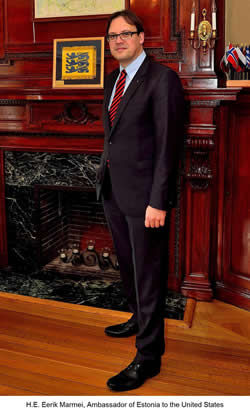
In June 1989 in Hungary, György Szapáry went with his son to a large public demonstration in a Budapest square where speakers openly called for the withdrawal of Soviet troops. When the police failed to intervene, an amazed Szapáry turned to his son. “It’s cracking,” he said. He was talking about the Kremlin’s control over his country — and he was right.
Some months later, Petr Gandalovič, then a 25-year-old high school math teacher in what was Czechoslovakia, was present at a national student day march in Prague. The march became violent when activists turned it into an anti-regime protest and baton-wielding police stepped in. As Gandalovič remembers it, out-of-control police forced students to run a gauntlet causing many injuries. The student march sparked a groundswell of public protest that pulled Czechoslovakia from the Soviet grasp.
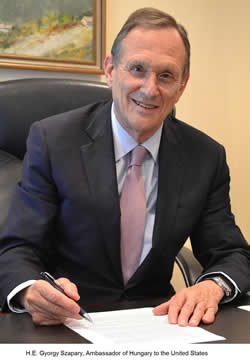 In Bulgaria, a young diplomat named Elena Poptodorova started going to political rallies and joined one of the new opposition parties. She stood successfully as a candidate in the first Bulgarian free election since World War II, and as a parliamentarian, was closely involved in reforming the constitution — starting with the removal of article one, which established the monopoly of the Communist Party. “It was a growing awareness, and there was a kind of naïveté in those very first months,” she recalls. “There were fabulous public rallies, and I still feel nostalgic about this energy, which was out there in the street.”
In Bulgaria, a young diplomat named Elena Poptodorova started going to political rallies and joined one of the new opposition parties. She stood successfully as a candidate in the first Bulgarian free election since World War II, and as a parliamentarian, was closely involved in reforming the constitution — starting with the removal of article one, which established the monopoly of the Communist Party. “It was a growing awareness, and there was a kind of naïveté in those very first months,” she recalls. “There were fabulous public rallies, and I still feel nostalgic about this energy, which was out there in the street.”
In Poland, college professor Ryszard Schnepf, one of the founders of Solidarity, watched jubilantly as the independent labor movement, led by Lech Wałęsa, won a majority in the country’s first free election, and said goodbye to Pavel Zamovski, the pseudonym he had used to write “second circulation” (a euphemism for clandestine) anti-regime pamphlets.
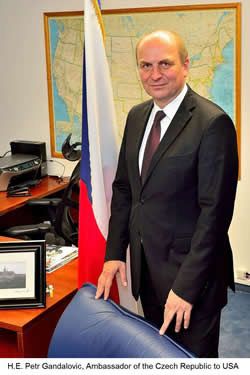
The shattering of the Berlin Wall 25 years ago in November 1989, with its piles of destroyed masonry, was a perfect visual metaphor for the seismic crack that opened in the historical surface. It crumbled what many had thought was the unbreakable link between the Kremlin and its East European and Baltic vassal states. And besides, East Germany was the gem in the imperial crown of the Soviet Union. Even so, each country found its own path to independence and democracy, and any historian of the period will tell you that dramatic events in East Germany were not the beginning of the end, but the end of the beginning.
As revolutions go, it was untypical in its amazing lack of violence. The Estonians literally sang their way to independence. Their protest meetings were song festivals and concerts. The Czechs dubbed theirs the “Velvet Revolution” to suggest the non-violent transition. Throughout the region, retribution against those who had held power was mostly non-violent, although by the end of 1990 every former Soviet satellite or republic in Europe had a process of some sort in place for weeding out former communists from the top, and blocking former secret police collaborators from government employment.
And yet Nicolae Ceaușescu of Romania was the only deposed Communist leader to be executed by the dissidents, along with his wife. Virtually every other former party boss died in his bed. There is actually a debate in Poland over whether the late Gen. Wojciech Jaruzelski, the leader who tried to suppress Solidarity, was a tyrant who did Moscow’s dirty work, or a patriot who through his own actions managed to stave off direct Soviet military intervention.
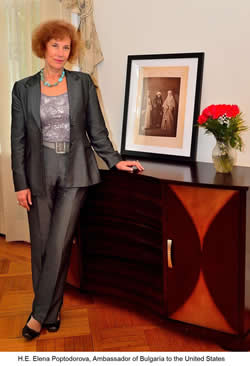
Ambassador Szapáry suggests that Eastern European regimes had simply reached the end of their historical cycle. “Dictatorships are like apples — when they are ripe, they fall,” he observed in a recent interview. “Today you hear criticism that you see the same people in power as you did under communism, you see them getting rich and sitting in parliament,” he adds, “but at the time, politicians didn’t have the taste for carrying out revenge.”
In Czechoslovakia, recalls Petr Gandalovič, the Czech ambassador, “it wasn’t what you would expect of a revolution.” He attributes the restraint to Václav Havel, playwright, founder of the dissident group Charter 77 and patron saint of the Velvet Revolution. With his sense of theater, says Gandalovič, Havel “was skilful in organizing the mass demonstrations as shows that raised people’s spirits. He brought in singers and actors; he knew how to calibrate the movement.” One of the dissident movement’s slogans was, “We’re not going to do to you what you have done to us.”
In Estonia, which like the other Baltic states was a Soviet republic and for all intents and purposes run from Moscow with security in the hands of the KGB, “no Estonian communist was ever put in prison,” recalls Eerik Marmei, the Estonian ambassador, “and everybody realized that the separate sides had to cooperate in the society.” But in 1992 Estonia introduced a program called “Purge the Place.” Two years later 73 percent of Estonian top officials were new appointees.
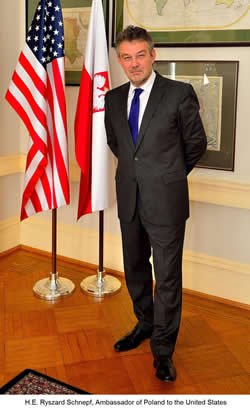
The peaceful transition to democracy was achieved by literally talking the communists out of office in debates, roundtable discussions and newspaper articles. The first competitive elections in Eastern Europe since before World War II were held in Poland, and the communist regime lost a lot of ground to the Solidarity movement. But political developments in Eastern Europe and the Baltic states amounted to a rapid process of corrosion to which the climax unfolded in Berlin on November 9, 1989.
Unrest had been rumbling in East Germany for some time. However, the incident that triggered the uprising actually unfolded in Hungary, which had long been the country to which East Germans could travel (because it was behind the Iron Curtain) to meet up with their West German relations.
In the late summer of 1989, Hungarians and Austrians agreed to open a free transit crossing point for a day as a sign of good neighborliness. When East Germans who were visiting Hungary learned of it they rushed to the crossing point and poured into Austria in thousands. “The Hungarians didn’t try to stop them, and Austria acted very positively,” says Austria’s Ambassador to Washington, Hans-Peter Mans. He had been at the receiving end of the exodus as an Eastern Europe desk officer in the Ministry of Foreign Affairs in Vienna. “We could not have taken care of them, but everyone knew that they were just passing through. Australia and Canada immediately took them as immigrants in big numbers.”
The incident increased pressure on the East German regime to allow its people to travel to West Germany and the communist leadership suddenly and unexpectedly announced the opening of Checkpoint Charlie, the main crossing into West Berlin for East Germans. Crowds immediately swarmed to the crossing point like lemmings sweeping towards the sea; some danced on the wall and even began to tear it down — while East German border guards stood idly by.
In West Berlin, the West German government gave each visitor 100 Deutschmarks to spend in the well-filled West German stores, in part hoping that they would then return home with their purchases, rather than defect.
What speeded up the transition across Eastern Europe was a common view of the future, which was to join what was then called the European Economic Community (now the European Union). The Czech Republic’s Ambassador Gandalovič says “Back to Europe” was one of the most frequent slogans seen at anti-regime rallies. And Hungary’s Szapáry adds, “Clearly [the European Union] helped when it came to setting up democratic institutions by spelling out its expectations, and it also helped to speed things up.”
Elena Poptodorova, of Bulgaria, says, “The ABC of parliamentary structure was actually greatly assisted by [Western] experts. And, of course, we had economic experts: the World Bank was there.”
In June 1993, Brussels presented the fledgling democratic governments of Poland, the Czech Republic, Slovakia, Hungary, Romania and Bulgaria with its conditions of membership — the so-called “avis communautaire” — they needed to establish stable institutions that guarantee democracy, legality, human rights and respect for and protection of minorities; a working, competitive market economy; and to demonstrate that they were capable of accepting membership responsibility: political, economic and monetary. Brussels would also test each country’s progress towards the required standards. It was not until 2004 that the Czech Republic, Estonia, Hungary, Latvia, Lithuania, Poland, Slovakia and Slovenia became full EU members. Bulgaria and Romania joined in 2007.
But Eastern Europe is celebrating the 25th anniversary of its liberation with one eye on the achievements of the past. The other is trained on a somewhat anxious future, with Russian troops once more on the move and a Kremlin leader with predatory dreams of past glory.
In 1989, Soviet leader Mikhail Gorbachev had his hands full dealing with Russia’s seriously deteriorating economy and its sclerotic communist government. Having earlier that year extricated the Soviet Union from Afghanistan, he “might have been able to deal with unrest in one country, but not in so many,” says Hans-Peter Mans.
But Gorbachev’s vision of the Soviet Union, partly of necessity, did not include using military force to suppress opposition to communist rule anywhere in the Kremlin’s empire as it had done in Hungary in 1956 and in Czechoslovakia in 1968. His was the Russia of “glasnost” (openness) and “perestroika” (reform or restructuring). Leading by example from Moscow, he encouraged satellite leaders to seek new ways of gaining popular support.
That, as they say, was then. Is it coincidence that Vladimir Putin grabbed the Crimea and many believe wants to annex the whole of the Ukraine even as countries of the former Soviet empire celebrate 25 years of freedom? “It’s very difficult to know what Putin wants, you can only see what he’s doing,” says György Szapáry. “He probably feels that Russia was humiliated by the break-up of the Soviet Union and wants to regain some of the prestige.”
To anyone in Warsaw, Prague or Tallinn, that sounds ominously familiar.
- Apartments, Housing, and Real Estate
- Automotive Sales & Leasing - Cars, SUVs & Trucks
- Clothing & Apparel
- Communications & Technology
- Concierge Services
- Contracting
- Dining & Entertainment
- Education
- Event Planning Services
- Financial Services
- Health & Beauty
- Home Furnishings
- Hotels & Accommodations
- Insurance
- Medical & Dental Services
- Office Services
- Property Management
- Security Services
- Shipping & Moving Services
- Specialty Services
- Travel & Transportation









